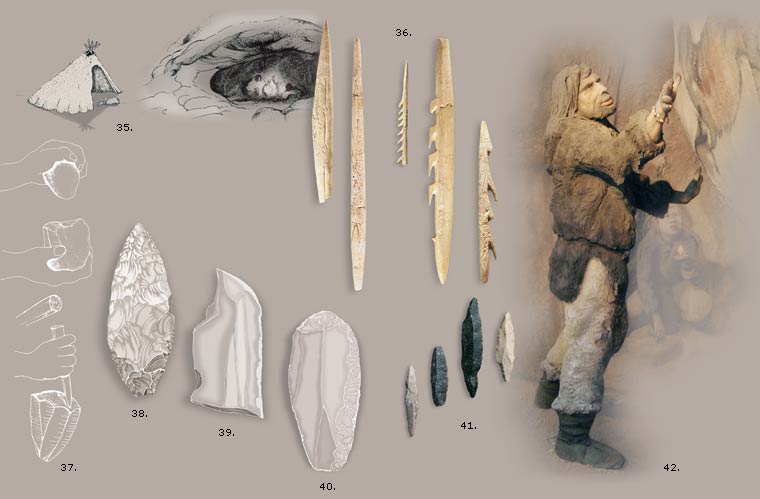Human beings during
the upper Palaeolithic
This was the natural environment in which our direct ancestors, Homo sapiens sapiens also known as CroMagnon mandwelt. The archaeological evidence suggests that they lived in
groups and that their sole purpose in life was not just to search for food for their own subsistence. The population of the time was organised in small groups which would plan how best to exploit the local resources (raw materials such as flint, game, fish, fruit, etc.). They settled in caves in the open air, in habitations which varied according to their function and how frequently they were used: dwellings, hunting or fishing areas, sanctuaries and assembly centres. These meeting points, such as the one that existed in Isturitz during the Gravettian and the Middle Magdalenian, were essential for forming close bonds and uniting different groups, reviving and unifying beliefs and conveying information and knowledge.
gipuzkoakultura.net


gipuzkoakultura.net
martes 20 enero 2026
Bertan > The Magdalenian pendants of the Praileaitz I cave(Deba) > Versión en Inglés: Human beings during
the upper Palaeolithic
- 1- Praileaitz I
- 2- The natural setting
- 3- Human beings during the upper Palaeolithic
- 4- Artistic expressions
- 5- Artistic expressions

35.Structure of an open-air habitation, similar to the one found in Pincevent (France) and an outcrop dwelling, from the Upper Palaeolithic.
36. Spears and harpoons from Palaeolithic levels of the caves of Aitzbitarte IV (Errenteria), Ermittia (Deba) and Urtiaga (Deba). 37. Extracting laminas of stone, using direct and indirect beating. 38. Foliaceous piece similar to a laurel leaf. 39. Burin. 40. Scraper. 41. Stoneworking at the Urtiaga cave (Deba). 42. Cro-Magnon men were the protagonists of the entire Upper Palaeolithic period. © Xabi Otero
36. Spears and harpoons from Palaeolithic levels of the caves of Aitzbitarte IV (Errenteria), Ermittia (Deba) and Urtiaga (Deba). 37. Extracting laminas of stone, using direct and indirect beating. 38. Foliaceous piece similar to a laurel leaf. 39. Burin. 40. Scraper. 41. Stoneworking at the Urtiaga cave (Deba). 42. Cro-Magnon men were the protagonists of the entire Upper Palaeolithic period. © Xabi Otero


